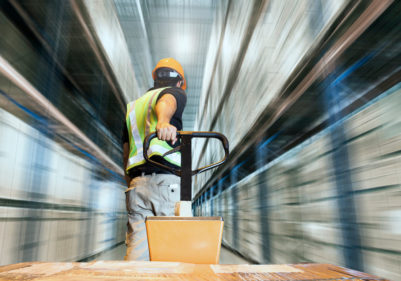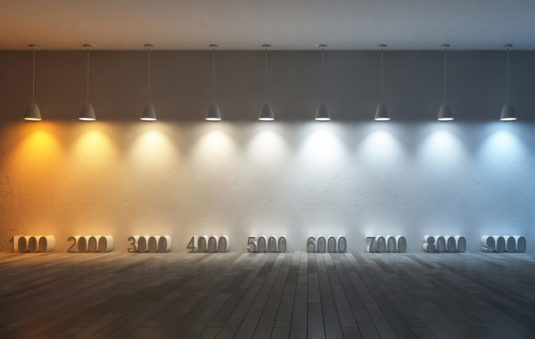How to light a warehouse
Robust balance
The best warehouse lighting is a robust balance between optimum levels, health & safety, and running costs.
Currently, there are many warehouses with aged lighting that fails to strike the sweet spot of economy, safety and quality. Some are a drain on the bottom line with energy and maintenance costs that could be reduced by 50% and more.
It’s crucial first to ensure that warehouse lighting meets or exceeds health & safety guidelines. These environments have a higher risk and dark or poorly-lit spaces clearly increase the potential for injuries or even fatalities. Quality lighting also adds to general safety with security personnel able to maintain excellent visibility in all areas.


Happy workforce
It’s also a fact that bad general lighting has a negative effect on the workforce, with increased reports of headaches, eyestrain, neck and back strain and nausea. With quality lighting, there can be a strong effect on productivity, morale and efficiency.
To meet the three requirements for effective warehouse lighting, LED is viewed as the best choice, set against other options such as high intensity discharge (HID) and fluorescent. LED delivers energy efficiency and versatility, with a full range of fixtures to cover all lighting needs, and there is a benefit of retrofitting to reduce costs.
50,000 hours
The long life of LED is also a significant benefit with many options last for 50,000 hours or more which means far less disruption to work and potential hazard from failed lamps as well as lower maintenance costs. The reduced maintenance ensures that there is less disruption to staff and the better visual conditions have proven to improve worker concentration and productivity.
LEDs are not affected from constant on/off cycles that trouble HIDs and fluorescent fixtures while they also continue to work well in a wide range of temperatures, unlike fluorescent fittings that do not function well in extremes of cold and heat, with knock-on effect on working life.
Why wait
Another benefit of LED warehouse lighting is the instant availability of full light, with no delays for warm-up that can take minutes and this feature is also excellent when used in conjunction with lighting controls, with no negative effect on total working life. And LED lighting produces less heat than other lighting.
The type of lighting needed in warehouses depends on building dimensions and storage methods – from floor stacking to full automation, moveable racking and robot picking. Illumination has to be safe and effective for staff in these areas while attention should also be focused on tasks like colour identification and reading of small print.
For warehouses, the CIBSE Code recommends illuminance ranging from 100 lux to 300 lux in open work areas but it’s important to design lighting that specifically addresses other areas like racking stores, where staff need to see details in a vertical plane, and lamps are should focus on these surfaces.
CIBSE general lighting guidelines
- Loading Bays 150 Lux
- Trade Counter 500 Lux
- Unpacking & Sorting 200 Lux
- Warehouse/Bulk Stores 100 Lux
- Large Item Stores 100 Lux
- Packing & Dispatch 300 Lux
- Small Item Stores 200 Lux
- Cold Stores 300 Lux
Balancing act
There is also a balance needed between brightness and avoiding glare, which can be a hazard as well as affecting productivity, choosing LED fixtures that specifically address this issue. It’s important that the design provides the optimum spacing for the LED lighting fixtures to avoid hot spots and glare from close positioning or dark areas from positioning that is too wide.
The most appropriate colour temperature choice – measured in Kelvin (K) – will help to maximise both safety and productivity. The best range for warehouse is between 4000K and 5000K, that provides cool white with perhaps a blue tint. Studies show that this range reduces eyestrain and helps to foster a productive work environment.


Light pattern
Warehouses will generally need differing light distribution designs, with areas that have tall shelving units most effective when operating under long and narrow light pattern, so no light is blocked by tops of shelving. Areas that are more open will benefit from LED fixtures that emit light in a wide spread in a square or rounded pattern.
The main workhorse of most warehouse lighting is the LED High Bay that are versatile and able to deliver quality lighting with a good beam angle in racking area, open spaces and showrooms.
As an essential part of the warehouse lighting mix, LED linear battens provide excellent quality light when compared to fluorescent models, are more energy efficient, and stylish designs mean they can be confidently deployed in offices and corridors as well as utility rooms.
Ingress protection
Shock and impact resistant LED battens that have an IP65 rating are also an ideal and robust choice in warehouse entries, loading bays, garages and other working areas where corrosion can be a challenge. As LED lighting is highly durable and can withstand shock and vibration, it is perfect for warehouses where machinery or forklifts are in constant use.
LED is also the best choice for the emergency lighting, which is a legal requirement. Long and maintenance-free life reduces costs while adjustable designs enable precision for safety.
Combined with smart lighting controls, LED is the safest, most efficient and versatile way to light a warehouse.